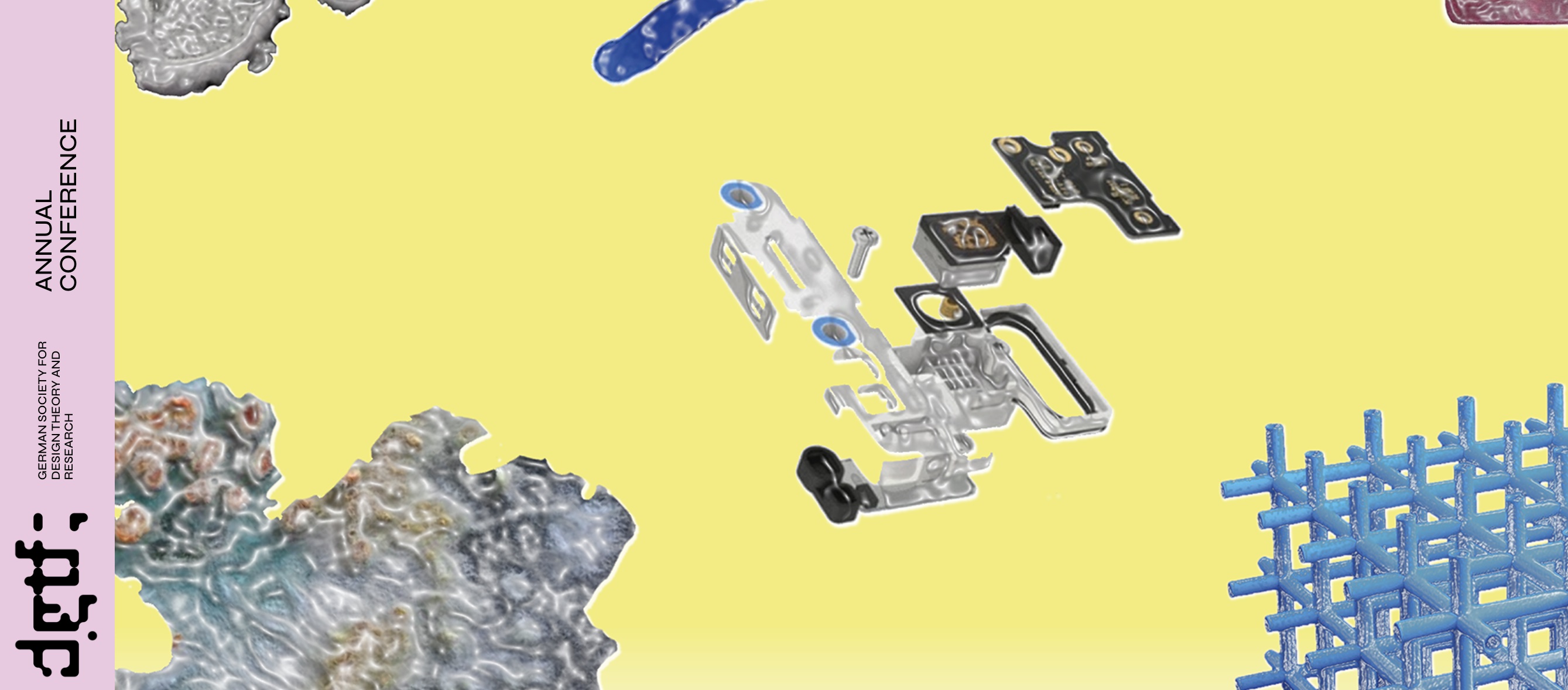ARTICLE
How FCOS fosters Circular Design
Key-Words: Circular Design, Circular Economy, Digital Product Passport
Autoren: Wolf Kühr, Benedikt Günter Seidel Published in Deutsche Gesellschaft für Design Theorie und Forschung, Jahrestagung 2022, Design und Nachhaltigkeit, Book of abstracts
Intro
In this article, we argue that the software “Fab City OS” fosters circular design. Our methodology is that we first define circular design from literature and then explain how “Fab City OS” fosters it. We argue from the context of the widespread availability of computer-aided design (CAD) tools and fabrication machines (CNC, 3D printer…). We see this in combination with increasing ease of access to places of production (Fab-, Textile-, Bio-, … Labs). If combined via Fab City OS, the two can leverage the potential of design for a circular economy. As the name says, Fab City OS is meant to be the operating system for “Fab Cities” (Díez, 2018). Fab City OS builds upon the work of Dr.-Ing. Tobias Redlich.
Circular Design
Circular design principles have been widely discussed in the literature and, in our understanding significant, projects. In the following, we present 6 of the most representative for our purpose (see Medova, 2016, EMA, European Commission 2022, Tischner 2015).
-
Product Life extension
Extending the life of a product, allows it to remain in use longer. -
Safe and circular material choices
Products based on materials that avoid dangerous chemicals for humans and the environment. -
Design for upgradability and easiness to repair
Modular design based on replaceable parts; easy disassembling and a well and accessible documentation of the design makes a product easier to upgrade and repair. -
**Design for standardisation & compatibility **
Standards help the concept of modular design. -
Ease of disassembly, remanufacturing and recycling of products and materials
Designing products and their parts to be eventually easily separated and reassembled for material reuse or re-introduction into material flows. -
Preventing and reducing waste, including packaging waste
Strategies to reduce waste during the production and in the final product as well as for its packing.
The three features of Fab City OS that foster Circular Design
Fab City OS is a digital infrastructure that aims to create an innovation ecosystem for a circular economy (see Seidel & Roio 2021). Followingly, we highlight how Fab City OS fosters Circular Design, as it is described above.
Interfaces for Open Source Hardware design
Fab City OS includes platforms to upload Open Source Hardware (OSH) design files. OSH are physical artefacts that have publicly available design (OSH documentation - OSHD) and metadata. So anyone with access to the internet can study, modify, pass on, rebuild and sell them (see OSHWA 2022). Though, Fab City OS also supports source available licensing models.
This fosters circular design because transaction costs are decreased. The openness of the design facilitates users and customers to publicly review the quality in terms of circular design. This direct feedback to the design and manufacturing process facilitates the amelioration of a given product to extend its life (principle 1). Also, the easier repairability fosters the emergence of repair shops (principle 3, 5) if everybody can access its OSHD even if he has not manufactured the artefact in the first place.
Interfaces for sales and distribution
In order to bring the manufactured products to the consumer, Fab City OS offers an interface (API) to already existing Marketplace platforms to offer OSHD on markets. Fab City OS even lets the globally distributed designers participate in the financial gains, which gives them financial incentives to make circular product design.
This fosters circular design because it connects markets with OSHD. Specifically, OSHD can hereby become products in different markets worldwide. Hereby, circular design (principal 1 - 6) is fostered overall, because designing circular artefacts provides income for designers.
Digital Product Passport
The Fab City OS Digital Product Passport (DPP) consists of various information about a product and its updates all along its lifecycle. The DPP is stored on a distributed record (a blockchain) and cannot be falsified. This technology serves as a basis for the development of an incentive and remuneration system for the users that we have touched in the paragraph before this one. Through the DPP, the customer is empowered to know more preciscly what he buys and consumes. Transparency is a strong incentive to foster a better choice of materials (principle 2).
The open-source design combined with the DPP enables every step of the product life cycle to know how the product is built and its material composition. This facilitates disassembling, remanufacturing the whole or parts of it and gives clear information for recyclers (principle 5). Conclusion In this article, we have unfolded the way Fab City OS fosters circular design via some of its features. We first defined circular design and showed how some of the features of Fab City OS make designing that adheres to that definition easy.
REFERENCES
- Díez T. (2018). FAB CITY - THE MASS DISTRIBUTION OF (ALMOST) EVERYTHING. Retrieved from https://issuu.com/iaac/docs/fabcitymassdistribution
- EMF (2022, April 30). Circular Design. Ellen MacArthur Foundation. https://archive.ellenmacarthurfoundation.org/explore/circular-design
- EU (2022, April 30). Sustainable products Factsheet, 2022. Europäische Union. https://ec.europa.eu/commission/presscorner/api/files/attachment/872167/Sustainable%20products%20Factsheet.pdf.pdf
- Medkova, K., & Fifield, B. (2016). Circular design for circular economy. Lahti Cleantech Annual Review, 2016, 32.
- OSHWA (2022, April 30). Definition (English) - Definition of Open Source Hardware. Open Source Hardware Association. https://www.oshwa.org/definition/
- Seidel & Roio (2021). This is distributed design - Making a new local & global design paradigm. Edited by Distributed Design Platform. https://distributeddesign.eu/wp-content/uploads/2021/10/This-Is-Distributed-Design-Book-by-Distributed-Design-Platform.pdf
- Tischner U. & Moser H. (2015). Was ist Ecodesign? Umweltbundesamt. https://www.umweltbundesamt.de/publikationen/was-ist-ecodesign
